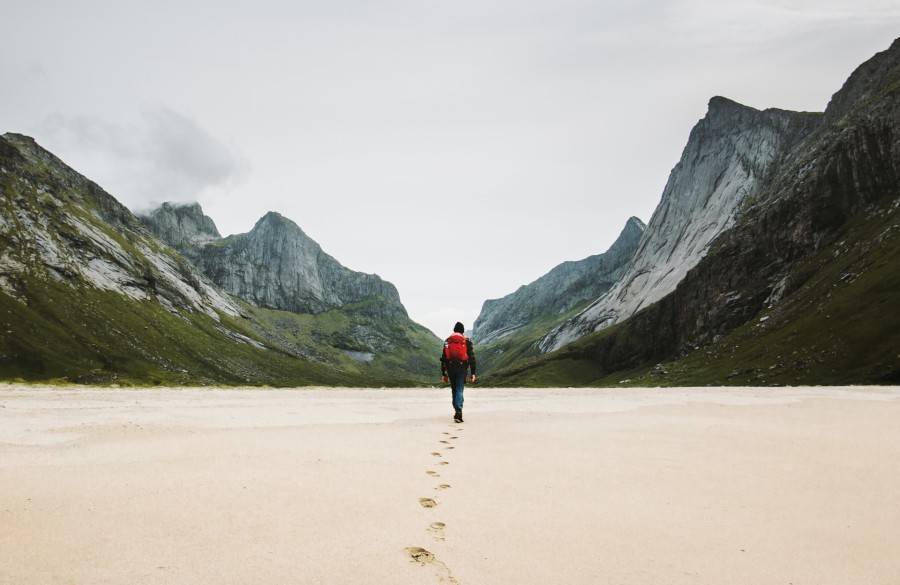Think of everything you do to drive traffic to your tour website. You might spend loads of money on Google Ads. Or perhaps you bear down on social media strategies. Whatever mix of online marketing you use, you shouldn’t let it go to waste with a low website conversion rate.
It’s one thing for travelers to visit your booking page, and another for them to make a reservation. Whether online or offline, bookings keep your tour business going. So rather than focus mainly on website traffic, conversion rate optimization is also important. After all, the two go hand in hand.
Keep in mind; there are many actions a visitor can take that’s considered a conversion. They can subscribe to your newsletter, watch your tour video, submit a contact form, and even start the booking process. However, we’re going to hone in on the big one — a completed booking.
Go ahead then and figure out your current website conversion rate for bookings. If you haven’t done the calculation before, the formula is quite simple:
Conversation Rate = Website bookings/Total traffic x 100
For reference, the global average for e-commerce conversion rates is between 1 and 3%. Surprisingly, the average conversion rate for travel websites is quite low, at 0.4%. Of course, this number varies across sectors, and might not be an accurate reflection of tours and activities.
Whether your booking conversion is higher or lower than the average, there’s always room for improvement. Since it’s not and never going to be 100%, you’ll always have a reason to ask why visitors aren’t booking. So let’s dig into conversion rate optimization strategies, and see where you can make some changes.
How to increase travel conversion rates
Your website is your first impression. When a traveler lands on any page, they can either navigate and take further action, or bounce right back to where they came from — like Google or Facebook. If that happens, it’s likely because they didn’t find what they were looking for or had a poor user experience.
While the former relies on attracting the right audience, you can improve the latter with essential components of an optimized website. The goal is to keep them around until payment. As long as they stay interested, and have an easy way to book, you can increase your website conversion rate.
Here’s how you can work towards that:
1. Intrigue visitors with exciting images
Are you asking, “what images can I use on my website?” Well, the quick answer is photos of your tours and activities, of course. But there’s more to it. Snaps from your point and shoot camera, or even your smartphone, won’t look as good as professional shots. So I recommend hiring a photographer to capture everything.

Not only will these images polish up your tour operator website design, but also help travelers picture having the experience — which is the first hook to get them to book. By featuring guests and highlighting their genuine expressions while participating, you can influence travelers to think, “I want to try that, too.”
Cinematography has the same effect, if not more. Regardless, the best places to add videos and images on your website is the header of most pages, and with your booking items.
2. Write killer copy and tour descriptions
Stunning website design is nothing without well-written copy. While images capture a visitor’s attention, it’s the wording that gives the information they need. Plus, your tour descriptions, headings, and paragraphs are keyword hotspots for increasing organic traffic — more on that another time.

So what does amazing tourism copywriting look like? Here are some tips:
- Use compelling and actionable headings, such as Soar Above the Pines or Zip and Play for the Day
- Get to the point — sweet and simple is best
- Make it skimmable with headings, subheadings, and bullet points
- Stick to your brand voice — whether that’s passionate, quirky, bold, or cheerful
- Keep it casual by writing like you’re having a conversation
- Work in keywords naturally, instead of stuffing them throughout
- Use creative tour descriptions that cover the important details
3. Share more about your tour company
Many travelers care about who they book with nowadays. Instead of only checking what’s included in the experience, they might also want to learn more about your tour company. That’s right; your About Us page plays a part in your website conversion rate.
Giving a little background info on your tour company is a good idea, but the best About Us pages outline a mission and core values as well. What does your tour business strive to do? What sets you apart from your competitors? These answers could be the deciding factor for a traveler because they can relate to, understand, and support it.
4. Build trust before the experience
Do you keep up with safety regulations? Do you regularly maintain gear and equipment? Are there health risks related to the destination, or the activity itself — like acute mountain sickness? What preventative measures do you take? Are there medically trained staff in case of accidents, especially in remote locations?
The safety of a guest is in your hands. That’s why most travelers have these questions before booking. To give them peace of mind, provide answers in your tour descriptions, About Us page, or frequently asked questions (FAQ) page.
Another way to build trust is by sharing the experience of previous guests. You can add reviews to your website to show how others had a good and safe time. Just ask a TripAdvisor reviewer for permission to use their testimonial in marketing materials or embed Google Reviews on your homepage.

Side note: safety doesn’t start and end with the experience. Data protection is also a concern. Give your guests that assurance with an SSL certificate online, and abiding by GDPR (if your business is in the European Union).
5. Keep close ties with social media icons
Realistically, you won’t win over a traveler on the first visit. Most of the time, it takes several interactions before a booking conversion. So the best way to keep them coming back is to give a reason and something to remember you by. How do you do that?
Using strategic placement of social media icons, travelers can follow your tour business or share your content on their newsfeeds. Every time you post a promotion, event, or photo, they might like, comment, or click. And when they share your blog posts, contests, and discounts, they’ll likely talk about your tours and activities with friends.
All of these small interactions add up over time. Otherwise known as social media engagement, you can nurture the relationship until they’re ready to book. So where should you start placing social media icons on your website?
- On the top or left side of a page
- As a floating sidebar
- Above a blog post
- Within the footer
- NOT on the booking page — eliminate any distractions here
6. Show visitors the next booking steps
Although travelers are experienced navigators, they could still wind up lost on your website. Luckily, the right calls to action (CTAs) can point them in the right direction.

Whether it’s a brightly coloured button or descriptive anchor text in a hyperlink, CTAs facilitate a smooth path to purchase. They tell visitors what do next, naturally guiding them down the booking funnel. And the book now CTA is the best at converting visitors into paying guests.
For CTAs on your website, here are some tips to get more clicks:
- Focus on the copy: while the button should be functional and in your brand colour, your wording should also make the next step clear
- Start with a verb: let travelers know what action they’re taking, such as Book, View, Sign up, Subscribe, Find, Check, and Join
- Go with the booking flow: your CTA should always match the traveler’s stage in the booking journey
- Keep CTAs consistent: if you use View Tours in one place, use it again in another
- Get creative and personal: Click here isn’t all that exciting — spice it up with something like Start Your Adventure or Get Off the Ground
Download our Homepage Conversion Guide for more ways to use CTAs, plus other website optimization tactics
See what I just did there?
7. Sell your tours in multiple currencies
Travelers might be eager to embrace everything about your destination — from food delicacies to the official language — but money is a different story. While many happily carry local cash, they’ll quickly convert on their phone or in their head before every purchase. Their wallet is a homebody.
According to statistics, 92% of consumers prefer buying from a business that displays prices in their local currency, and if it doesn’t, 13% say they will abandon the cart. So if you get customers from all over the world, it’s a good idea to personalize the cost of your tours and activities on your booking page.

Instead of guessing, travelers can see what they’re actually paying and budget for their itinerary accordingly. For those who book experiences before leaving, this is especially useful because they might not be familiar with your currency yet. Nor able to predict the ever-changing exchange rate if they plan on paying at check-in.
Luckily, Checkfront now comes with Currency Display, so your guests can easily see the total price in a currency they’re familiar with.
8. Create a seamless booking flow
You’re nearly there once a traveler is ready to book. With the end in sight, you might think there’s little left to optimize. But now is the time to really buckle down. Their booking isn’t guaranteed, so this last section matters the most.
At this point, travelers will leave at the slightest inconvenience. While some might book no matter the obstacle, most scare easily, abandon the cart and possibly turn to your competitors. After all, they’re interested in the activity; they just came across a reason to drop out of the checkout process.
Without knowing why they changed their mind, it’s impossible to reduce booking abandonment. However, you can use Google Analytics to see where there may be friction, and follow these effective booking process steps:
- Verify availability: let your guests choose the date, time, and number of participants
- Use finger-friendly buttons: every step should be noticeable and easy to click, especially for mobile bookings
- Sell gift certificates: after all, they might just be browsing for a special holiday present
- Upsell on the booking form: give them another chance to enhance the experience with related items
- Limit the required fields: only ask what you need to know — like name and contact information. The less, the better
- Avoid adding extra fees: not all surprises are pleasant, but if you must include them, let the traveler know what it’s for
- Send an automatic confirmation: relieve any anxiety the traveler might have by confirming that their booking went through
- Collect guest details later: if you need more information per guest, have them submit a Guest Form after payment
Final thoughts
Your website and booking page design significantly factor into your conversion rate. By optimizing areas that need attention, you should start to see more website visitors stick around until booking. And if you need a little help, you can always turn to tourism website templates.
P.S. Our booking website builder can improve your website conversion rate. See for yourself.

Take your business to the next level!
Online bookings. Flexible pricing. Outstanding support.



